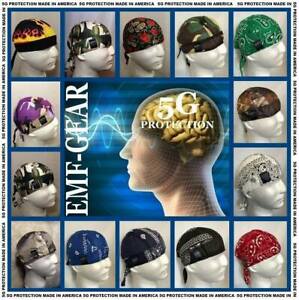The Faraday hat is an EMF protection hat that blocks radio waves from getting transmitted through your head. faraday cage hat 's a tinfoil hat which is used extensively by people suffering from Electromagnetic hypersensitivity (EHS).
The tin foil hat functions as a Faraday cage, an enclosure that protects its interior from electrostatic charges and electromagnetic radiation by distributing them around the exterior of the cage.
Do Faraday Cages Work
A Faraday cage is a metallic object that functions as an electrical conductor. When an electric charge comes into the cage, the free electrons within the material instantly align themselves and cancel out any fields that are incoming.
The effectiveness of a Faraday cage is contingent on its design, size and construction materials. Also, they must be groundable and have gaps and seams minimized.
The most effective Faraday cages can block both static electric charges and electromagnetic waves, safeguarding those conducting sensitive research that would be impeded by radiation. MRI scanners, for example must be protected by a Faraday cage to prevent electromagnetic waves from disrupting the imaging process for diagnostic purposes.
Despite their incredible effectiveness, Faraday cages aren't ideal. Electrons are still able to penetrate a Faraday cage and cause harm to the electronics inside. This is why they're often employed in labs with high power to reduce noise and interference. They also can help protect against electromagnetic pulses (EMPs) which are high-energy weapons designed to neutralize electronic equipment.
What is Faraday Fabric? Works
It doesn't matter if it's radio waves wireless networks, or other sources of electromagnetic radiation interfering with these connections insecure and disrupt the functioning of devices. In the end, many vital components are wrapped with protective materials such as copper foil to shield them.
But these cages can be awkward and bulky. That's why researchers from Drexel University have developed a Faraday fabric which is flexible and durable. It is washable as well as washable.
This fabric is made from an 2D material known as MXene and can block virtually all electromagnetic radiation. In the future, clothes made of this technology might be used to shield wearables from interference and people from radiation that could be harmful to them.
While the technology is being developed however, it's a fascinating concept for clothing. The team is hoping that this fabric will lead to clothing equipped with RFID-blocking pockets. This will be useful for people who wish to shield their devices from their eyes while using them. This would also help prevent a common health concern which is brain tumors caused by radiation.
Faraday Cages Versus Faraday Fabric

If you're not familiar with Faraday cages, here's how they work When an electrical field comes in contact with conductors made of metal, such as aluminum mesh, it triggers the positive and negative particles to split. This redistribution of charges eliminates the electromagnetic wave that are brought in.
This process allows utility workers to be near power lines without fear of being electrocuted. It also helps keep military equipment and other telecommunication devices safe from interference.
However, faraday cap can be expensiveand aren't suitable for everyday use. That's the reason Faraday fabric is available.
faraday hat
If you've ever been exposed to Faraday cages you'll know they're nothing more than an all-encompassing conductor that swerves electromagnetic radiation before it gets to the sensitive electrical components that are protected inside. This type of shielding is also used in elevators, scan rooms that MRI machines are located in, "booster bags" that shoplifters utilize to bypass electronic security tags as well as inside your microwave at home.
Can a tin-foil hat really be a Faraday cage?
To block completely radio waves the Faraday cage needs to be completely sealed and enclosed.
However, a tin-foil hat doesn't have the space to do that and that's why it can only block radiation.
Additionally, tin foil hats are able to amplify radio signals. They supposedly do this by making use of resonance.
